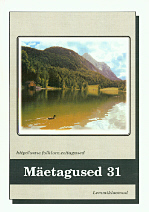Koerad Eesti asukate viikingiaja maailmapildis
Dogs in the World-View of the Viking Age
Author(s): Tõnno JonuksSubject(s): Anthropology
Published by: Eesti Kirjandusmuuseum
Summary/Abstract: In the article I am going to give a concise overview of the relationship between dogs and people in the context of Estonian prehistory. The dog has been accompanying humans ever since the arrival of the first people on Estonian territory ca 9000 BC. Pendants made of dog teeth were in wide use during the Middle Neolithic. At the end of the Neolithic when all kinds of pendants disappeared, all signs of dogs disappeared as well. Throughout the Late Bronze Age till the end of the Roman Iron Age (1100-500 AD) dogs were placed into graves, although not often. Also, they are mostly represented by single bones. A new tradition began during the Migration Period, reaching its culmination in the Viking Age: now dogs were buried as a body, they were cremated on the funeral pyre with their masters. In addition, small bronze figurines were made depicting dogs. Some of these were used as pendants; some are just figures that would have been difficult to use as pendants (for example the figurine from Ehmja grave). The region's historians have discussed the connection of animals with the concept of the Otherworld relatively thoroughly. Still, the dog has not been the most popular animal in these studies. Several interpretations have been offered: the dog as the guard of the Otherworld or the grave, the dog as a warrior-dog, the dog as a sacrifice. Considering that dog burials and figurines appear during the Estonian Viking Age and the Late Iron Age, it seems that dog had been connected with a new concept of the Otherworld that started to spread in the Migration Age. According to this, the Otherworld existed as a separate place that reflected the life in this world, although not one-to-one but with a certain shift towards the ideal. This means that the Otherworld expressed not the actual life but the model of what life should be like. Considering the material of Estonian stone graves, there is good reason to believe that it reflects only the burial sites of the elite and their ideas of the Otherworld. A part of the Otherworld was probably made up by celebrations and other elite amusements like hunting, a symbol of which might have been a dog in the grave.
Journal: Mäetagused. Hüperajakiri
- Issue Year: 2006
- Issue No: 31
- Page Range: 29-48
- Page Count: 20
- Language: Estonian

